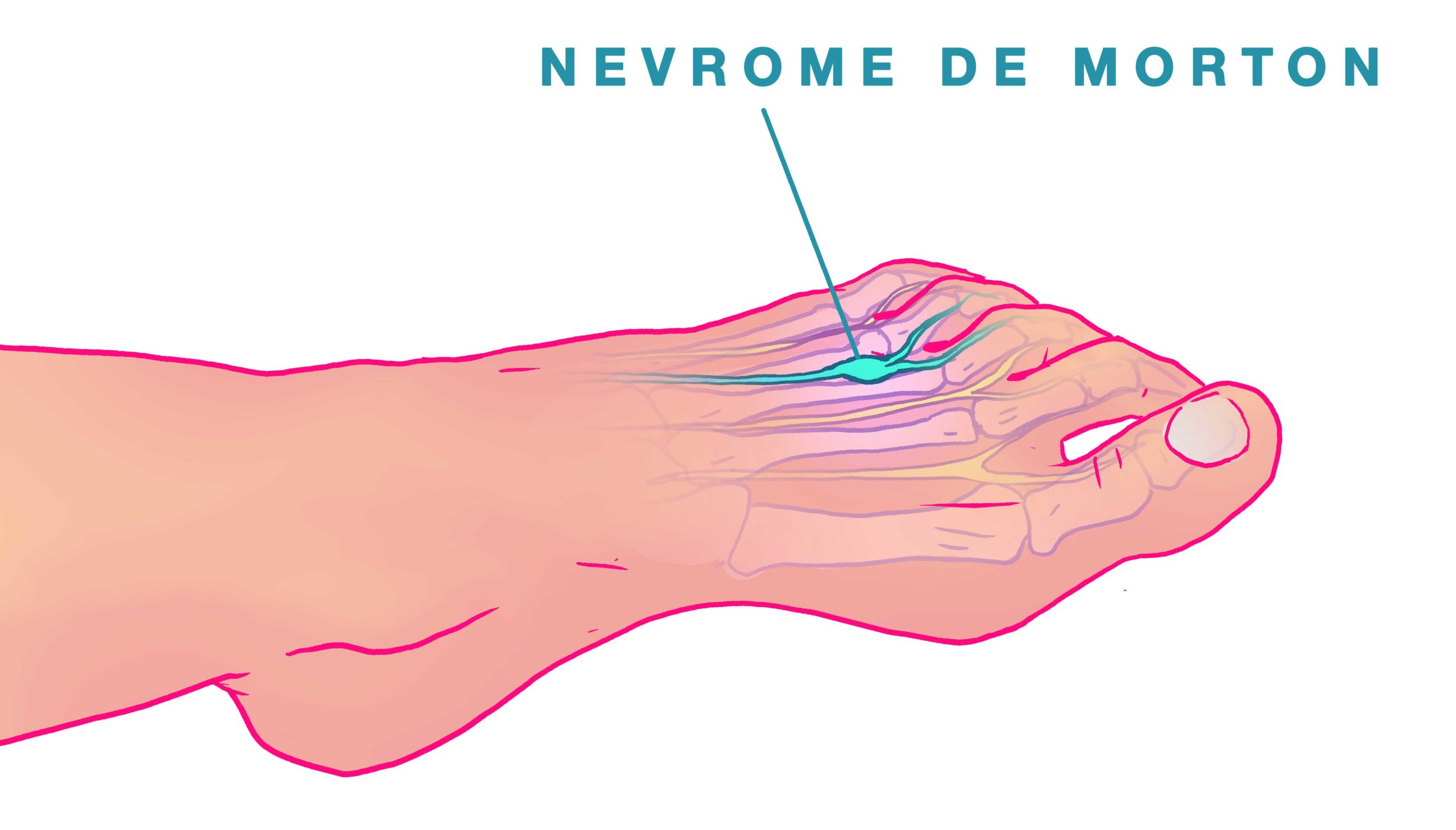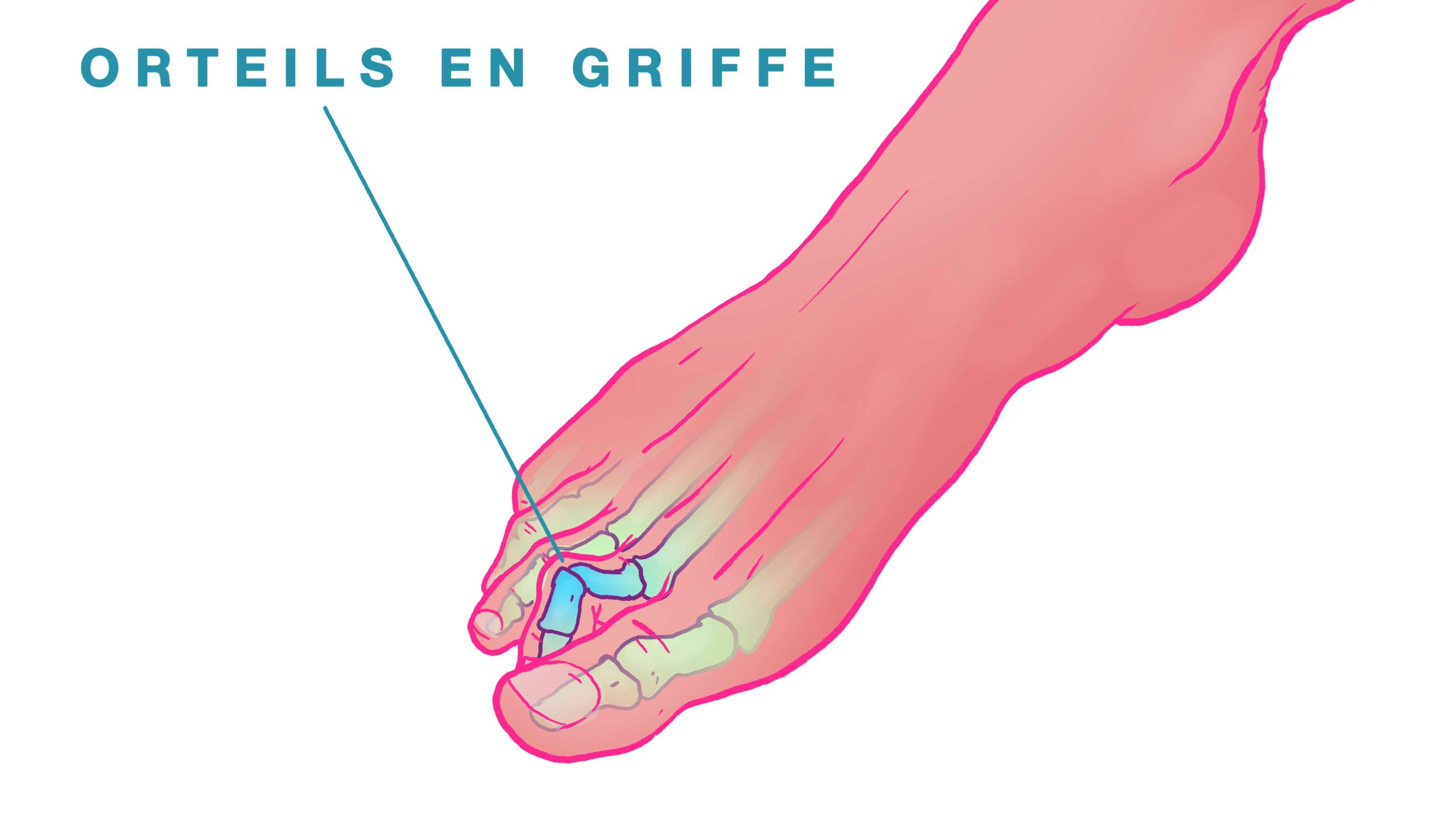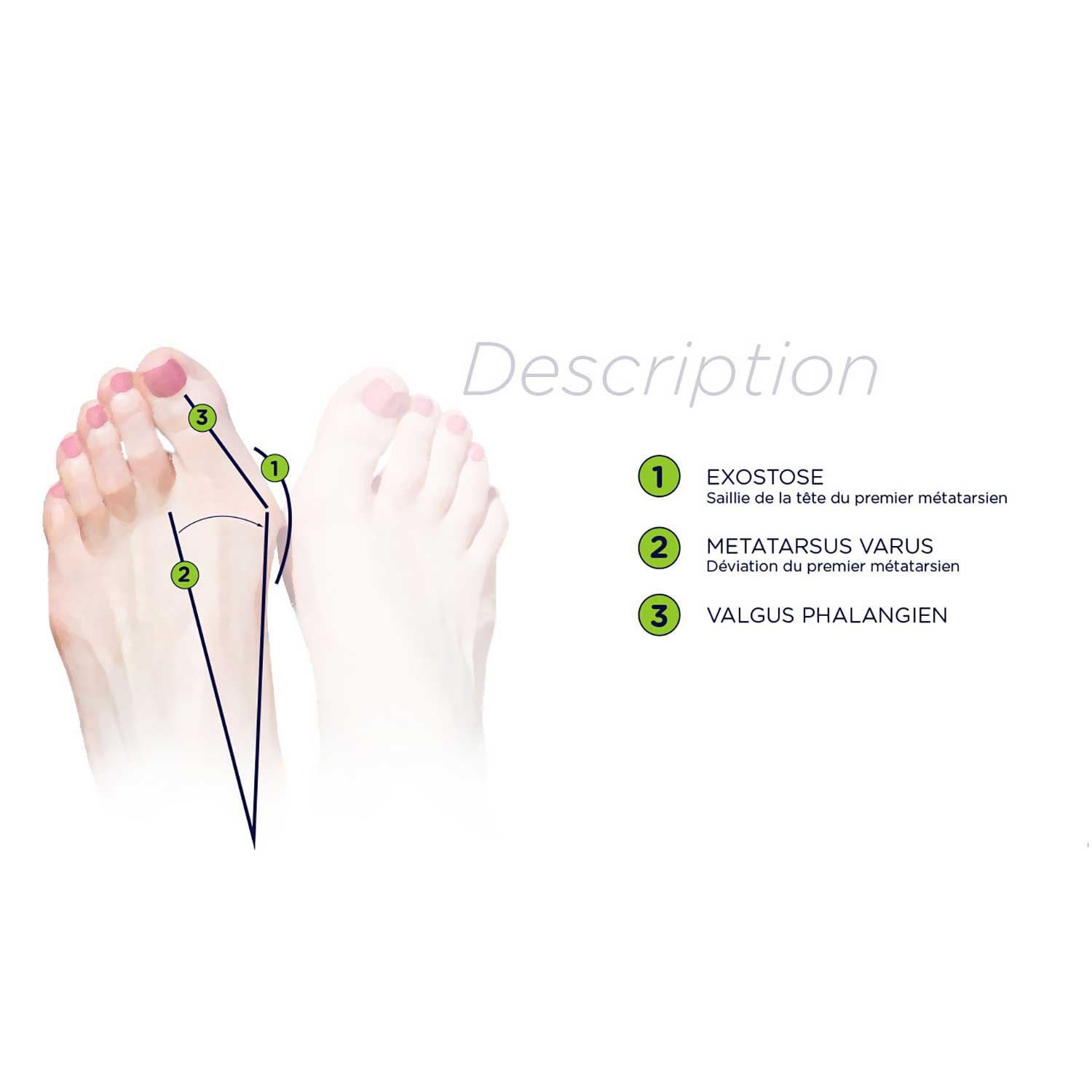
Hallux Valgus Marseille
Definition of Hallux Valgus
Dr Becquet's office
The Saint George Clinic
2 Avenue de Rimiez
06105 Nice
Tel : 04 93 169 169
Hallux Valgus Surgery Nice
What is hallux valgus?
Under its complicated and learned name, hallux valgus is nothing more nor less than an extremely common ailment better known under the nickname of "bunion". It consists of a deformation of the big toe. The bump corresponding to the head of the bone (the metatarsal) grows, becomes inflamed and painful.
Normal locomotion is hampered and aggravates the pain, causing a vicious circle. Wearing shoes becomes particularly painful. This disease can be associated with arthrosis of the affected joint called hallux rigidus. In this case, both ailments must be treated.
Hallux Valgus Surgery Nice
Causes of hallux valgus
-This condition affects the female sex in more than 90 % of cases, most often around the age of 50, an age when hormonal impregnation changes due to the menopause: this would lead to hyperlaxity favoring the deformation of the big toe.
-In 30 % of cases, a family factor is found.
- Excess weight also favors the formation of hallux valgus.
-The morphotype of the foot is a key element that can explain the deformity of the big toe. Indeed, in 75 % of cases, hallux valgus is associated with an Egyptian morphotype corresponding to the case where the big toe is longer than the second toe.
With this morphology, the big toe is too long to be able to position itself normally in the shoe, in particular when it has a pointed toe: it is thus forced to deform itself by taking in width the place that it cannot take in length, hence the deformation in hallux valgus.
Conversely, the square foot (big toe the same length as the second toe) and the Greek foot (big toe shorter than the second toe) are much less likely to cause hallux valgus.
Moreover, one of the objectives of the surgery will be to obtain one of these two morphotypes when the pre-operative morphotype is Egyptian. In this way, the operation will eliminate a cause of recurrence.
-Hyperlaxity is not the only cause of the predominance of hallux valgus in women, since it is also caused by wearing shoes with pointed toes and/or high heels.
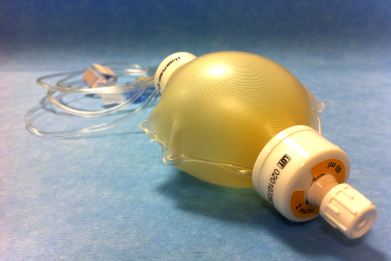
The treatment
To provide immediate relief, open-toed shoes are recommended, or alternatively, soft, flat shoes.
Painkillers may also be prescribed in some cases.
A podiatrist can also help to counteract the deformity of the toes with orthoplastics. This is only possible at the very beginning of the deformity, as this technique is not effective on a deformity that has already been fixed.
Moreover, wearing orthopedic insoles can be relevant when the toes are already clawed and the joints are already in a pronounced inflammatory state. This allows to reduce the pressure on these joints and thus to reduce this type of pain.
These treatments are symptomatic and will not prevent the long-term deterioration of the patient's foot. The only effective solution is surgery.
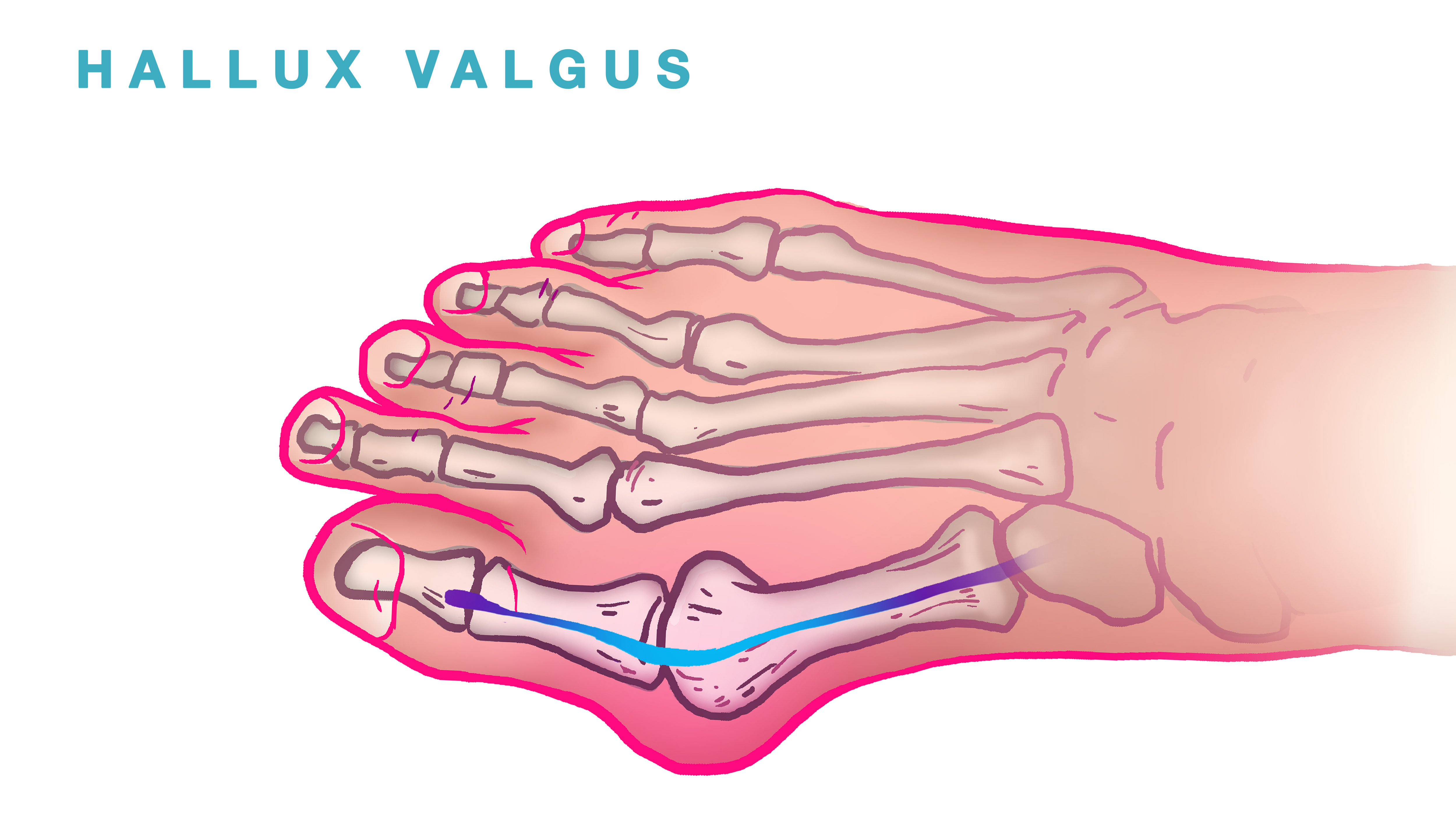
How to treat hallux valgus?
If the so-called symptomatic treatments do not succeed in stopping the evolution of the deformities and pain, only surgery can truly cure hallux valgus.
The choice of technique is made with the practitioner. There are minimally invasive techniques, with incisions of a maximum of 2 centimeters, and percutaneous techniques, which involve making very small incisions, of the order of a millimeter.
The procedure is performed under local anesthesia. Sedation can be offered to the patient if desired. The patient can leave the hospital the same day.
Spontaneous evolution of hallux valgus
At the beginning of the evolution, the deformity of the big toe is isolated: the main reason for consultation remains the pain located opposite the exostosis, where one finds most often an inflammatory bursitis which can ulcerate and lead to an infection. In addition to the classic deformity, there may be a rotation disorder: the toe turns on itself, so that the nail no longer looks towards the zenith.
The deformity continues to evolve on its own, so much so that the hallux valgus ends up deviating the other toes laterally. This is how the 2nd ray syndrome appears, corresponding to the appearance of a claw on the 2nd toe pushed by the big toe which takes its place.
This deformity, initially limited to the 2nd toe, progressively extends to the entire forefoot.
The lateral toes retracted in the form of claws will come into conflict with the shoe, resulting in painful dorsal corns.
At the same time, under the effect of the claw, the metatarsophalangeal joint will subluxate or even dislocate, giving rise to metatarsalgia (pain when pressing on the metatarsal head).
It is always preferable to correct deformities when they are limited to the big toe, which simplifies the surgical procedure but also the postoperative course and reduces the recurrence rate.
What are the objectives of surgical treatment?
To reduce the deformity of the big toe, it will be necessary to reduce the excessive gap between the 1st and 2nd metatarsals (reduction of the metatarsus varus). To do this, a Scarf osteotomy is performed, allowing the translation of the 1st metatarsal towards the 2nd metatarsal.
The second bone procedure will be performed in the 1st phalanx by an osteotomy, allowing to achieve three objectives:
- reduction of the phalangeal valgus (= deviation of the 1st phalanx) by cutting a wedge-shaped segment of bone
- a shortening of the 1st phalanx allowing, in the case of an Egyptian foot, which could be a source of postoperative recurrence if not corrected, to transform it into a square or Greek foot.
- a correction of a possible rotation disorder in the big toe, in order to obtain a nail looking towards the zenith in post-operation.
To be successful, this surgical treatment must be accompanied by a rigorous postoperative protocol, both for the resumption of support and for the treatment of edema and pain.
Surgical techniques.
The minimally invasive and percutaneous techniques mentioned above are interesting, but more difficult to implement for the practitioner.
-Percutaneous surgery
This technique is only 15 years old in Europe. It is not specific to the treatment of hallux valgus nor is it systematic. As its name indicates, it is performed through the skin, with miniature burs introduced after making very small incisions with mini scalpels. The surgeon cannot directly visualize the operation. He has of course several tools to do so:
The first is fluoroscopy. It consists of using a very low-powered X-ray machine in order to make the exposure of the patient and especially of the surgeon completely acceptable. Of course, this technique only allows the visualization of bones. It is mainly a means of control for an experienced surgeon who can thus see the operated areas.
The second is the use by the surgeon of his touch and feel. The counterpart is that only very experienced surgeons can use the percutaneous intervention technique.
Obviously, when properly performed, it has only advantages. It is minimally invasive and allows a quick recovery after the operation.
-Minimally invasive surgery
This technique only requires incisions of less than 2 centimeters. However, the rest of the operation is comparable to "classic" surgery, with some percutaneous entries. The mini-chevron osteotomy, for example, is a recently developed technique that greatly minimizes the size of the operating field.

When to consult?
Consultation is highly recommended when the pain is embarrassing or even disabling when walking or putting on shoes. The pain may be more intense on the other toes, when they curl up into claws, than on the big toe itself, if the disease is already advanced.
It is therefore necessary to explain to the patient that the cure can only come from the treatment of the big toe, even if it is the other toes that may cause him more pain at the time of diagnosis.
Some people, especially young women, also consult for aesthetic reasons. Surgery to treat hallux valgus is then totally contraindicated.
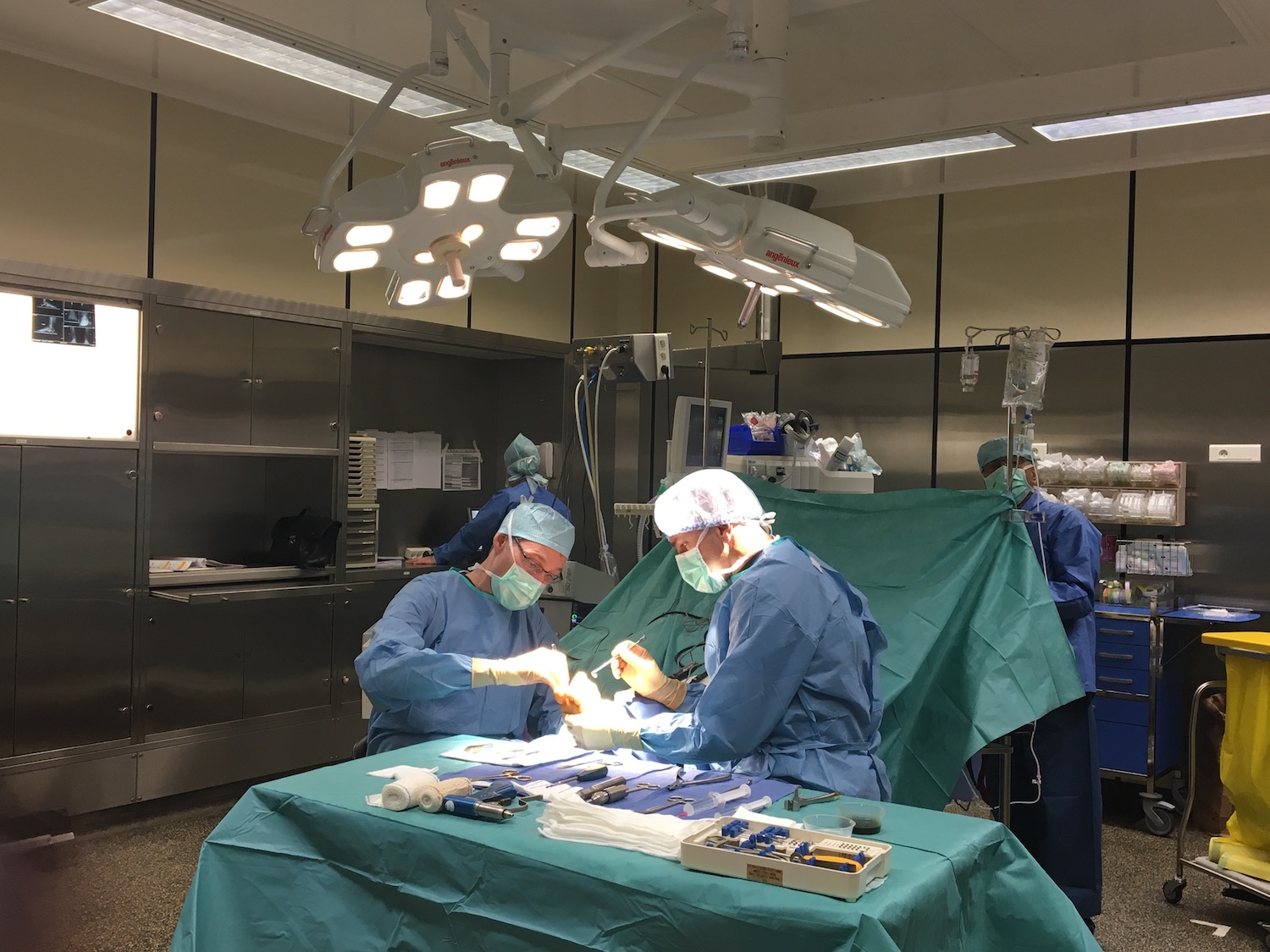
What are the criteria for surgery?
The intensity of the pain is the main criterion. However, one should not wait until the pain becomes unbearable, as the operation may become more cumbersome with time.
It is indeed easier to intervene on an early hallux valgus than on the same disease that has evolved to the point of deforming all or part of the other toes.
This is all the more relevant as considerable progress has been made in recent years, particularly with regard to the invasiveness of the procedures, which minimizes the postoperative sequelae.

What are the advantages of these techniques for the treatment of hallux valgus?
The main advantages of these techniques are their minimally invasive nature.
-Pain is considerably reduced, as well as postoperative swelling and bruising.
-The resumption of support is immediately possible
-Outpatient care
-Faster recovery after surgery
To contact the
Foot surgeon | Hallux valgus Nice
Saint-George Polyclinic
Hall 3 - 3rd floor
2 avenue de rimiez
06105 Nice
Phone
04 93 169 169

